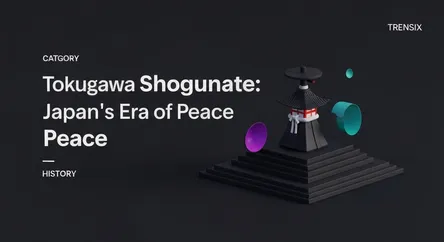History
Tokugawa Shogunate: Japan's Era of Peace

Discover the Tokugawa Shogunate, the military government that unified Japan and ushered in over 250 years of peace, isolation, and cultural growth.
What is it?
The Tokugawa Shogunate was the military government of Japan that ruled from 1603 to 1868. Also known as the Edo period, it was established by Tokugawa Ieyasu after his victory in the Battle of Sekigahara, which ended a long period of civil war. This new government centralized power, moving the administrative capital to Edo (modern-day Tokyo), while the emperor remained a symbolic figure in Kyoto. The shogunate governed through a feudal system, with lords known as daimyō ruling over domains under the shogun's strict control. A key policy was the "sankin-kōtai" system, which required daimyō to reside in Edo every other year, ensuring their loyalty.
Why is it trending?
The Tokugawa Shogunate is a significant period in history because it brought over 250 years of peace and stability to Japan after a century of conflict. This long peace fostered significant economic growth, urbanization, and a flourishing of arts and culture, such as ukiyo-e woodblock prints and kabuki theater. It is also known for its policy of national seclusion, or "sakoku," which severely limited foreign trade and banned most foreigners from entering Japan. This isolation profoundly shaped Japan's unique cultural and social development. The eventual decline of the shogunate and the Meiji Restoration in 1868 mark Japan's rapid transition from a feudal society to a modern industrial power.
How does it affect people?
The Tokugawa regime organized society into a strict four-class hierarchy: warriors (samurai), farmers, artisans, and merchants. This system was rigid and offered little social mobility, defining a person's status and occupation from birth. For the common person, life was characterized by peace and order, but also by heavy taxes, especially for peasants. The focus on agriculture led to increased food production and a rising population. The growth of cities like Edo, Osaka, and Kyoto created new opportunities for merchants and artisans, leading to the rise of a vibrant urban culture. The emphasis on education also led to high literacy rates, laying the groundwork for Japan's future modernization.